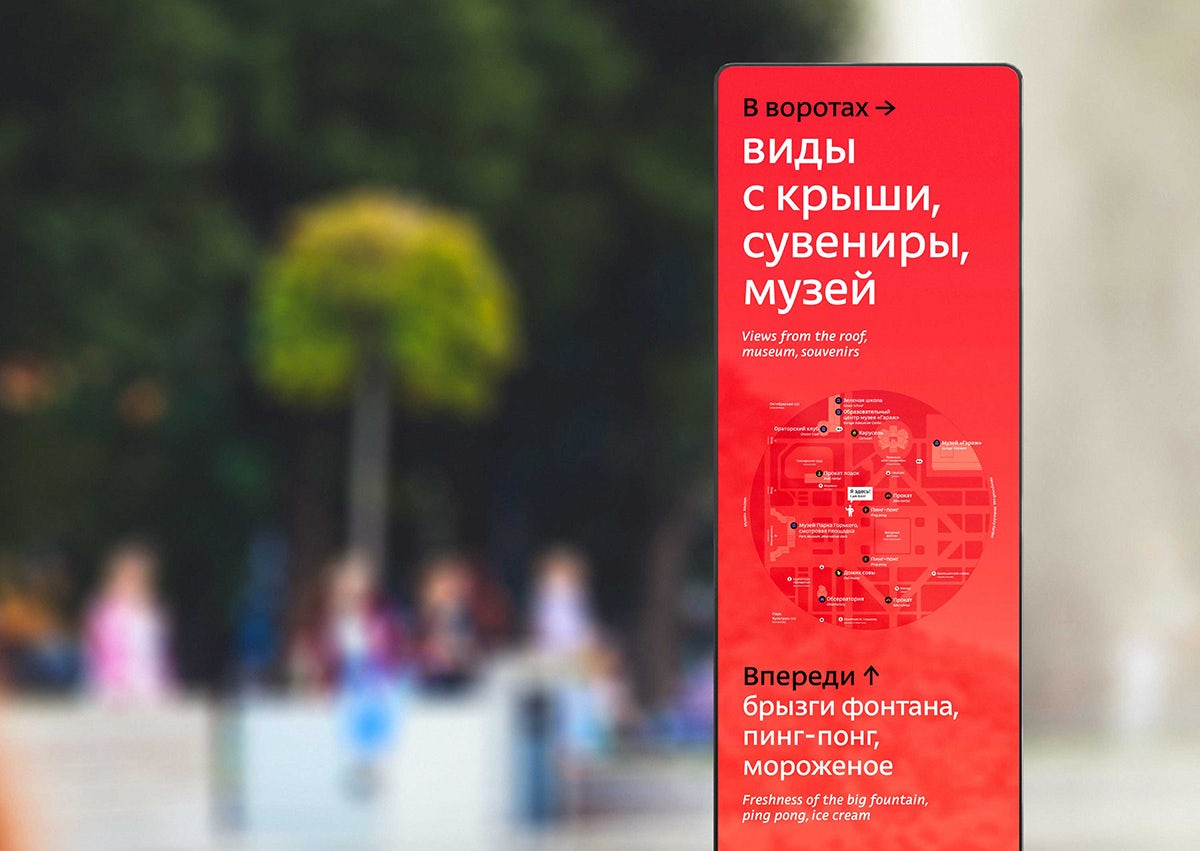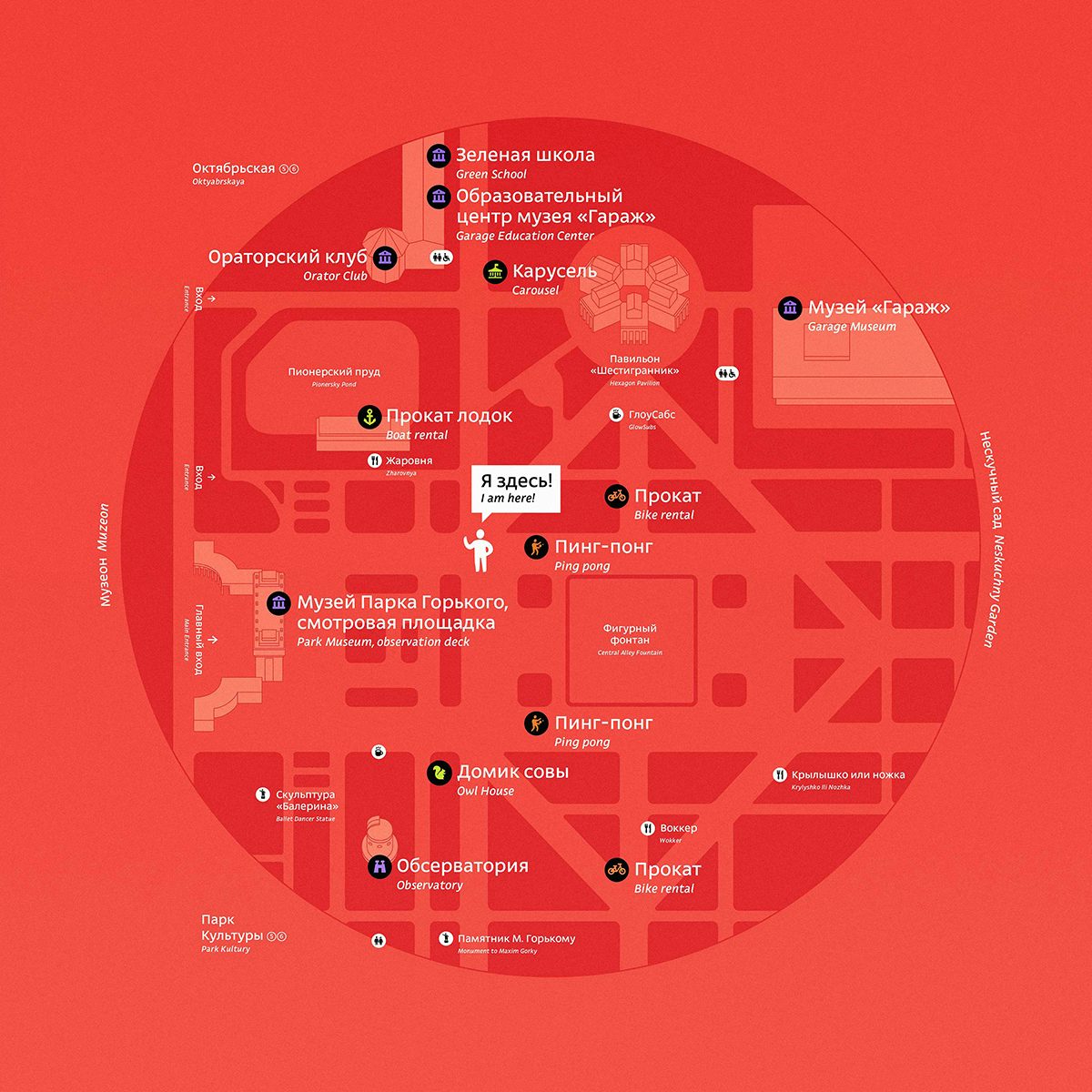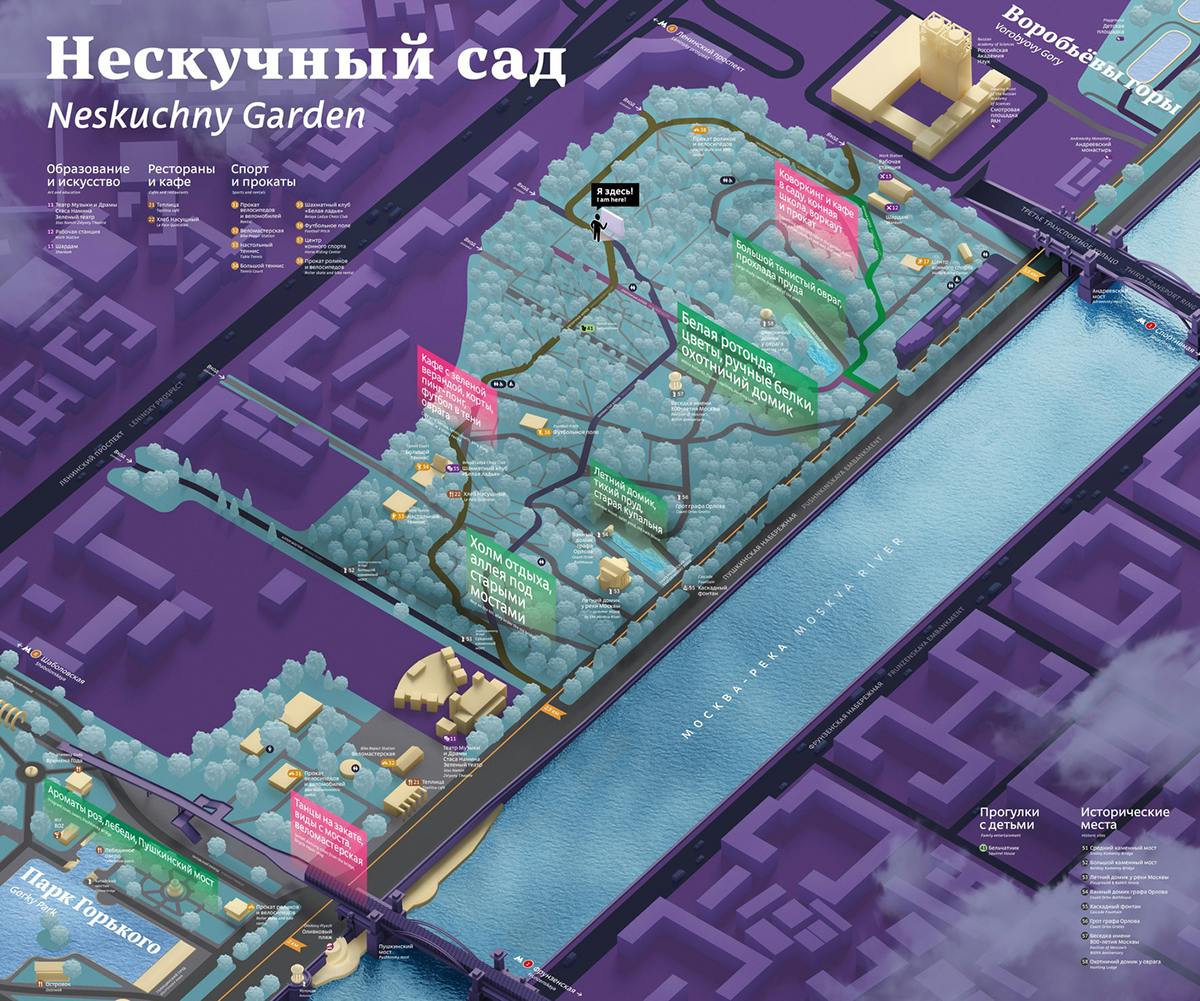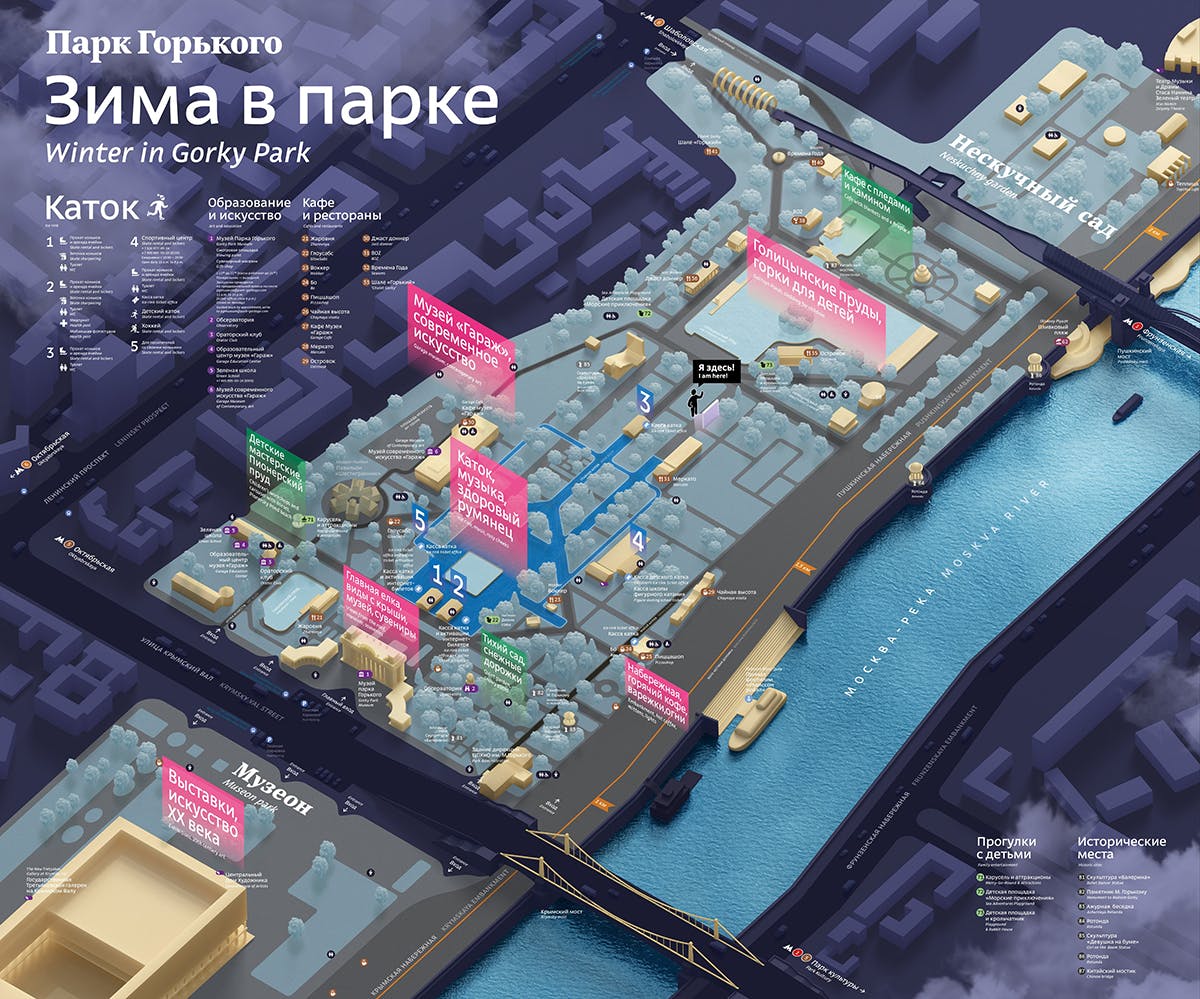Wayfinding is more than just functional in Moscow’s Gorky Park
The park puts a playful spin on navigation with a new system highlighting the area’s smaller pleasures, and signage that transforms into nocturnal art objects
Situated in the centre of Moscow, Gorky Park underwent a substantial redevelopment in 2011 that transformed it from a forgotten wasteland into an “urban paradise”.
The park recently accumulated more grounds to include the Muzeon Park of Arts, Neskuchny Garden and the green hills of Vorobyovy Gory. However many visitors weren’t exploring beyond the original confines of the Gorky Park grounds, so Russian design firm Art Lebedev Studio was brought in to help visitors expand their horizons and discover what else Gorky Park has to offer.
Although wayfinding systems must be practical first and foremost, there is no reason why navigation can’t be both fun and functional. This principle is well executed in the new wayfinding at Gorky Park, which sits useful information like directions and public transport connections alongside more human touches like showing the “emotional zones” of the park, where the symbols indicating various attractions have a more playful feel than the rigid form of many traditional pictograms.
The signage serves a more practical function during the day. By night, however, the signs transform into art objects thanks to backlighting, which showcases eye-catching graphics, animations, moving image works and even film clips, making for a surprising twist that demonstrates how form and function can coexist in harmony.


![]()























